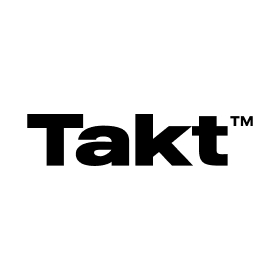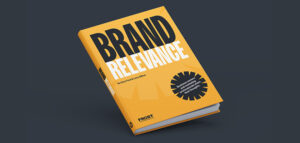
B2B Startup Branding: Get Your Business Buzzing without the Bee-wildering Stress!
Starting a business is no easy feat. It requires time, effort, and dedication. But, that’s only half the battle. Once you’ve got the business up and running, you need to get the word out and make sure people know about your business and what it offers. That’s where branding comes in!
As it’s especially important for B2B companies, we’ll discuss B2B startup branding in this blog post, and provide some tips to help you get your business buzzing without the bee-wildering stress!
Let’s get started!
What is B2B Startup Branding?
B2B startup branding is the process of developing a unique identity for your business and communicating it to your target audience. This identity is made up of various elements, including a logo, tagline, and visual style, as well as messaging and positioning. When done correctly, it can help you differentiate your business from the competition and create an emotionally resonant connection with your target audience.
At its core, B2B startup branding is about creating a unified message that resonates with your target market. This message should be engaging, informative, and tailored to your audience and should convey the core values and mission of your business and speak to the needs of your buyer persona. If all these elements frighten you and you don’t know where to start, you can always partner with branding agencies to help you build trust and loyalty with your customers, so they are more likely to purchase your products and services.
B2B Startups Branding Strategy Examples
You can use a variety of techniques to develop an effective branding strategy for your company. With some examples to help you along the way, you may find the most crucial b2b branding strategies for startups below:
Developing Your Brand Identity
The first step to effective B2B startup branding is to develop a strong brand identity. This includes defining your brand values, mission statement, and of course, vision. Your brand values should be a reflection of the core beliefs of your company. They should be unique and authentic, and be consistent across all of your communications. In addition, your mission statement should succinctly explain why your business exists and what it offers while your vision is aspirational and provides direction for the future of your business.
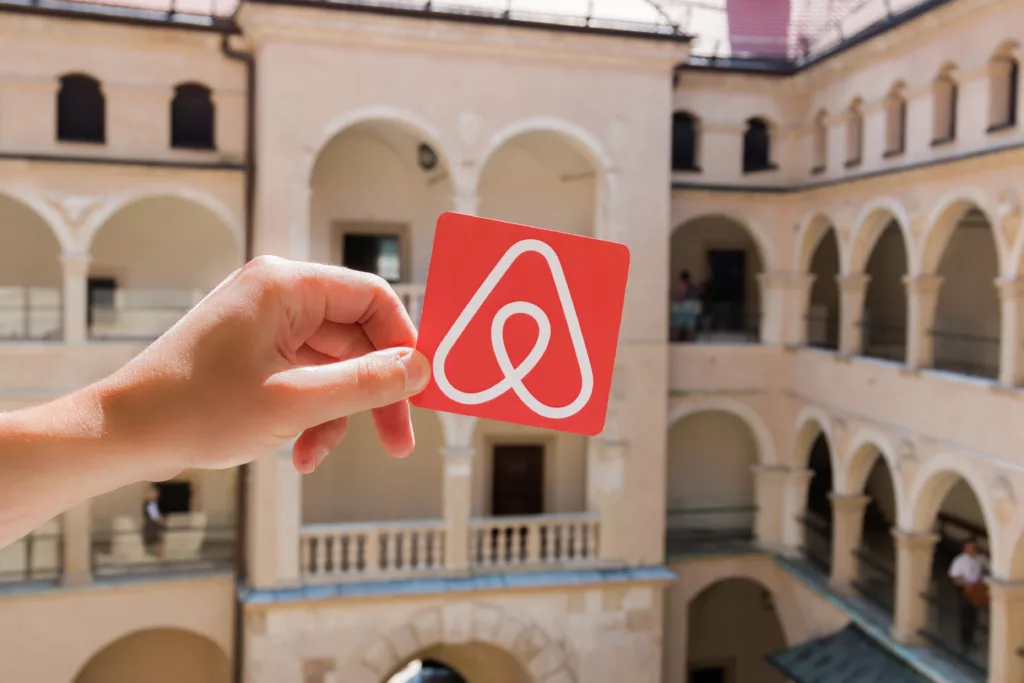
Airbnb provides one of the best examples of brand identity. The company had the tagline “travel like a human” up until 2014. After that, they realized that consumers used Airbnb for more than just travel. So, the company changed its slogan to “Belong anywhere.” Airbnb is one of the well known websites which is used by many people around the world. You might be wondering how they were able to accomplish such achievement. It’s because they have continually improved their brand since it was created! Along with changing their tagline, they also altered their logo. It didn’t always appear the way it does now, and their tagline’s optimization contributed to the shift.
Brand Positioning and Messaging
Once you’ve established your brand identity, the next step is to develop a positioning statement and messaging. Your positioning statement should clearly communicate the value you offer and why customers should choose your company over the others. It should be succinct and to the point and your messaging must be consistent with your positioning statement and tailored to the needs of your target audience. A direct and engaging message is essential; it should provide tangible benefits to customers and be consistent across all channels.
Here’s an example of Brand Positioning Statement by Amazon:
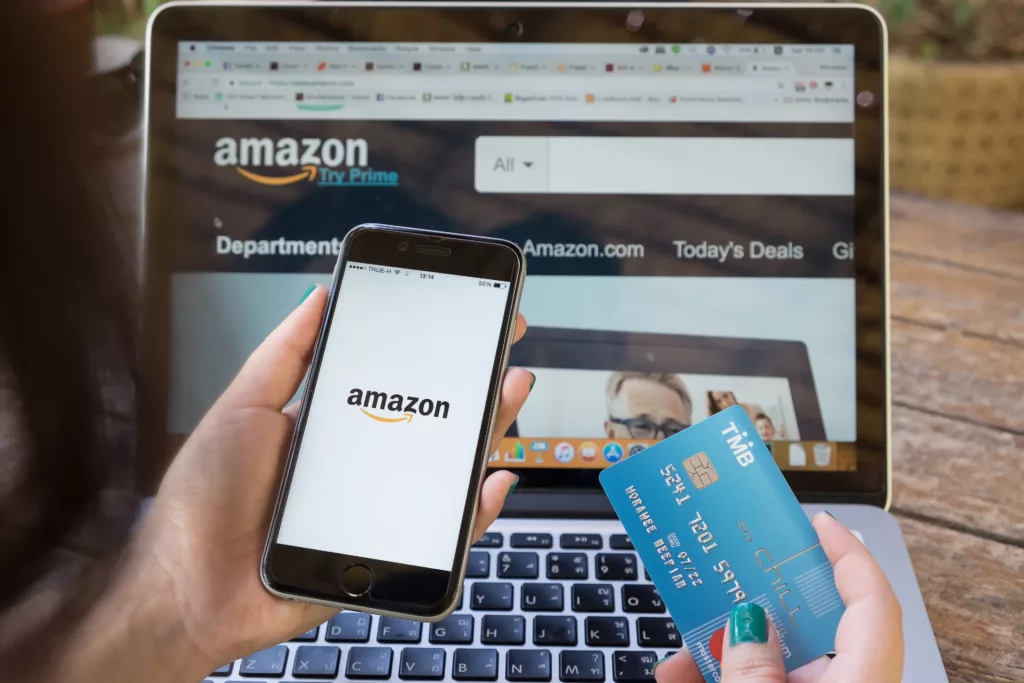
“For consumers who want to purchase a wide range of products online with quick delivery, Amazon provides a one-stop online shopping site. Amazon sets itself apart from other online retailers with its customer obsession, passion for innovation, and commitment to operational excellence.”
Understanding Your Target Market
It’s impossible to do appropriate branding when you don’t comprehend and know your target audience. It’s always essential to have a clear understanding of who your target audience is, what they need, and how your business can meet those needs. To do this, you should conduct market research and develop buyer personas. You can learn about industry trends, analyze customer behaviour, survey consumers, and gain a general sense of your target market by conducting market research.
The process of establishing buyer personas, in which you create profiles for your ideal customers, begins once you have a solid understanding of your target market. These should contain both psychographic demographic data, such as interests, values, and behaviors, as well as demographic data, such as age, gender, and location. You may construct better targeted messaging and more successful marketing campaigns with the help of buyer personas.
We know that; however, defining your audience, especially as a startup, is never easy. It may be really stressful, and you never know if your efforts will be effective. But, a startup marketing agency that focuses on your primary industry might relieve you of a significant load.
Crafting Your Brand Story
Your brand story is an important part of your company. It’s an emotional narrative that tells the story of your business and conveys the values and mission of your brand. It should be engaging and emotionally resonant with your target audience. The story of your brand should be rooted in your brand identity, positioning statement, and messaging. Make sure you include the necessary information about your company, such as its mission, history, and unique selling points while including customer stories, case studies, and testimonials.
Your brand story should be compelling and inspiring, and it should convey the value of your business in a meaningful way!

McDonald’s is one of the biggest food chains in the world. It is a multinational corporation that serves millions of customers in over 120 countries. The brand story of McDonald’s is an interesting one, filled with innovation, dedication and a commitment to value. McDonald’s started out as a small business in the 1940s in the US, with two brothers, Richard and Maurice McDonald, who had a vision to serve the best quality food at affordable prices. The brothers developed a unique brand strategy, which included a marketing campaign centered around the idea of fast service and convenience. This strategy proved to be a success, and the two brothers soon opened their first McDonald’s restaurant in 1948. Since then, McDonald’s has grown to become one of the most recognized brands in the world. The company’s mission is to be the world’s best quick service restaurant experience and to provide customers with quality food and service at a value. To achieve this, McDonald’s has consistently focused on innovation, introducing new products and services that offer convenience and value to customers.
Creating an Engaging Visual Identity
It’s also important to create a simple and memorable logo and tagline that reflect your identity and should be easily recognizable in any context. A successful brand identity includes your logo, tagline, color palette, typography, and design elements.
No doubt that your visual identity is a crucial part of B2B startup branding so make sure you deliver your message as unique as possible.
- Your tagline should capture the essence of your brand in a few short words and should be memorable and evoke emotion in your target audience.
- The logo you’d like to create should be simple, memorable, and easily recognizable.
- Your tagline should be short and to the point.
- The color palette should be eye-catching and evoke emotion.
- And finally, your typography and design elements should be consistent and visually appealing.

Chobani, perhaps one of the greatest yogurt brands in the US, is a brand that has become synonymous with delicious, all-natural yogurt. It has become a household name and its visual identity is a big part of that success. Its logo is simple and uncluttered, which is a reflection of the brand’s commitment to pure and simple ingredients.
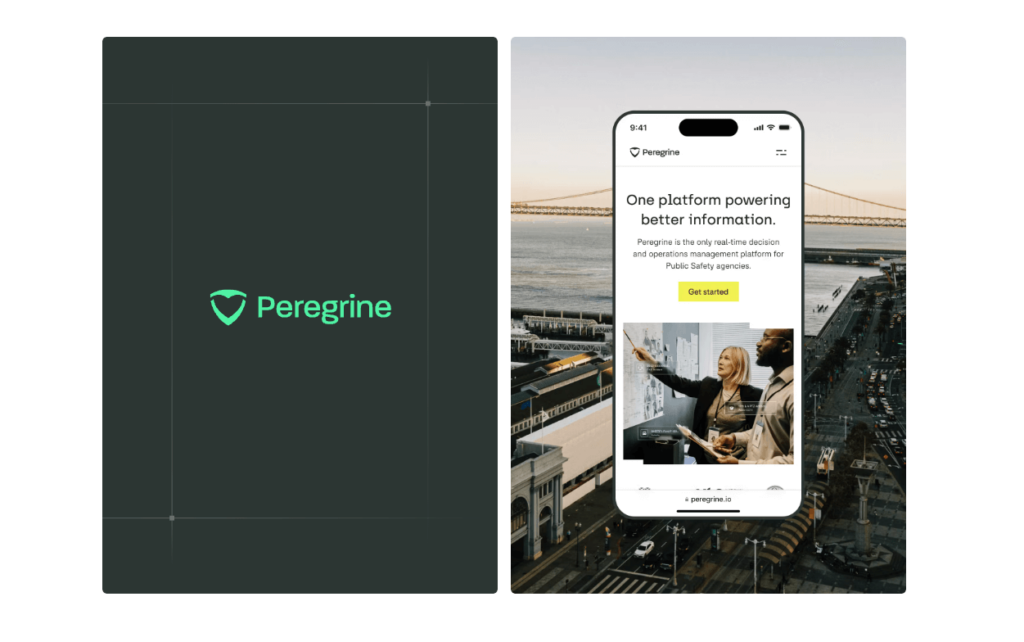
Similarly, in the B2B tech sector, Peregrine, a startup enhancing public safety with data technology, showcases another facet of effective branding. Together Agency developed a cohesive brand identity for Peregrine, a startup enhancing public safety with data technology. Focusing on “breakthrough moments,” the branding emphasized Peregrine’s ability to synthesize real-time data to aid public safety decisions while respecting privacy and civil liberties. The visual identity blended technological and human elements, using a specific typeface and a color palette of dark, earthy hues with vibrant accents to reflect efficiency and action. The marketing website featured animated cityscapes and micro-animations, illustrating the platform’s dynamic capabilities and reinforcing the brand’s commitment to both innovation and community service.
Developing an Effective Brand Strategy
Once you have established your brand identity, crafted your brand story, and created an engaging visual identity, the next step is to develop an effective brand strategy. Developing a comprehensive marketing plan and setting measurable goals will help you receive positive feedback for all your efforts; however, there are still a few things you must keep in mind! First things first, your marketing plan should have the essential strategic elements for brand awareness, promotion, and customer engagement while also including tactics for optimizing your website and social media presence. While you plan for these elements, make sure you also have a budget and timeline for each strategy!
In addition, setting measurable goals is equally important. This will help you track records and measure the success of your branding efforts and should be SMART (specific, measurable, achievable, relevant, and time-bound).
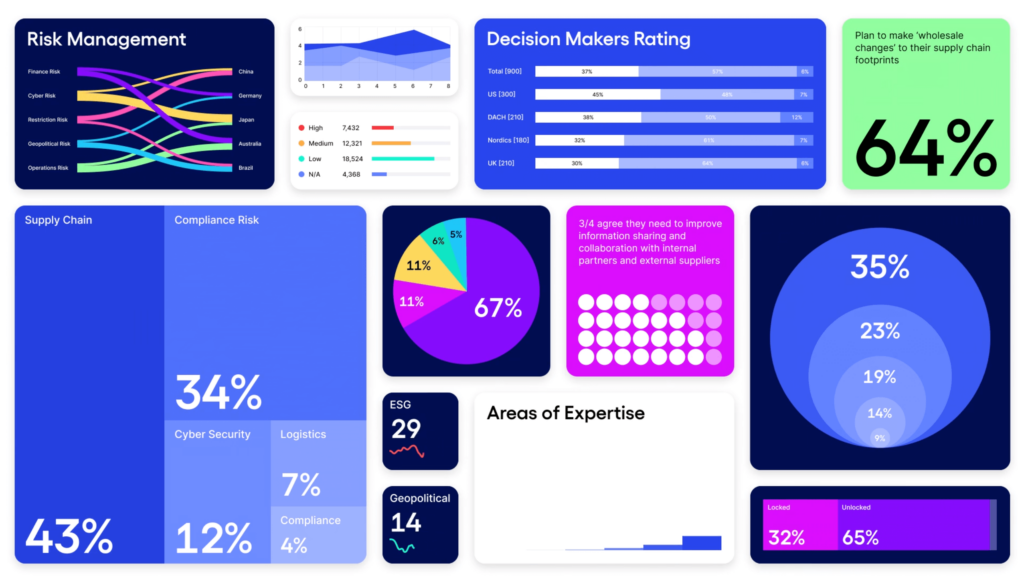
An excellent example of a brand strategy that balances growth and consistency comes from Clay Agency’s work with Interos, a B2B company specializing in risk management. While Interos is not a startup, the lessons from this project are highly relevant for growing businesses. Clay Agency refreshed Interos’s visual identity while preserving its core brand recognition. By enhancing the logo, refining the design system, and incorporating infographics and illustration systems, Clay helped Interos modernize its brand without losing sight of its established values. This approach allowed Interos to maintain its credibility while adopting a more vibrant, modern identity—a critical step in B2B branding strategies.

Similarly, the brand strategy of Turkish Airlines is one of the most successful marketing strategies in the aviation industry. It is based on the concept of customer engagement and building an emotional connection with their customers. Turkish Airlines has a long-term commitment to their customers and has invested heavily in marketing activities to ensure that customers have a positive experience when flying with them. The airline has created a unique brand identity, with its slogan “Widen Your World” and its extensive network of destinations across the globe. This has helped the airline to establish itself as a global leader in aviation, as well as creating a strong sense of loyalty among its customers. Furthermore, the airline has embraced technology, launching its mobile app which allows customers to manage their booking, check-in and track their flights, as well as receive notifications about upcoming flights and promotions.
Analyzing and Refining Your Branding
The final step in the B2B startup branding process is to analyze and refine your branding efforts. This means tracking customer engagement, evaluating the success of your campaigns, and making necessary adjustments. Analytics tools can help you track customer engagement, such as website visits, pageviews, and conversions. The output helps you identify areas of improvement and make necessary adjustments to your branding strategy. You should also evaluate the success of your campaigns by analyzing customer feedback, tracking ROI, and looking for areas of improvement.
Conclusion
Successful branding campaigns for B2B companies are vital for a variety of reasons, and there are many different ways to go about doing it. Building a strong brand identity, an engaging brand story, and a creative visual identity is considerably more than merely necessary if you want to set your b2b marketing agency apart from the competition and establish an emotionally resonant connection with potential clients. You can get your business buzzing without the bee-wildering stress by putting in place the right branding strategy.




